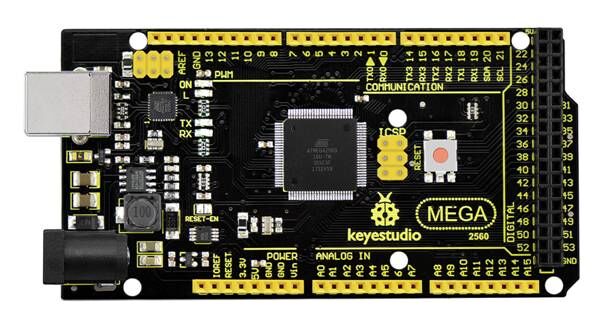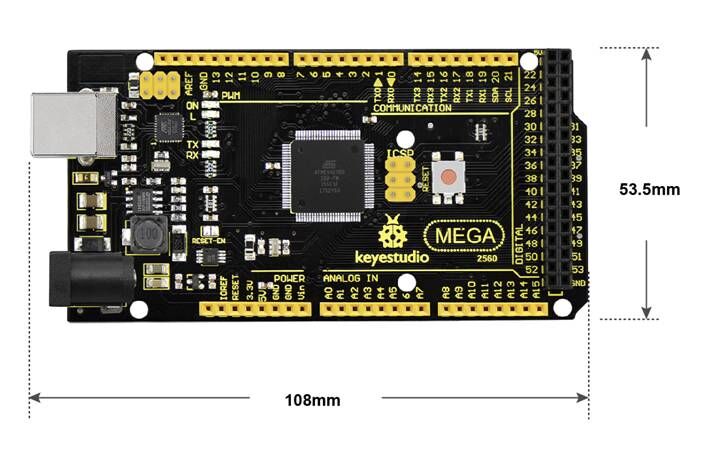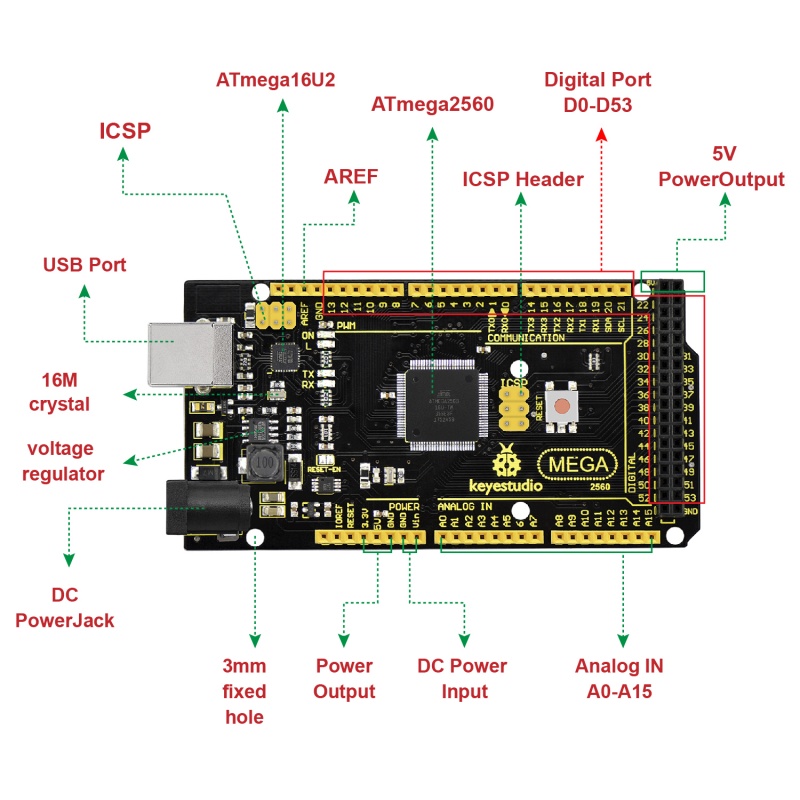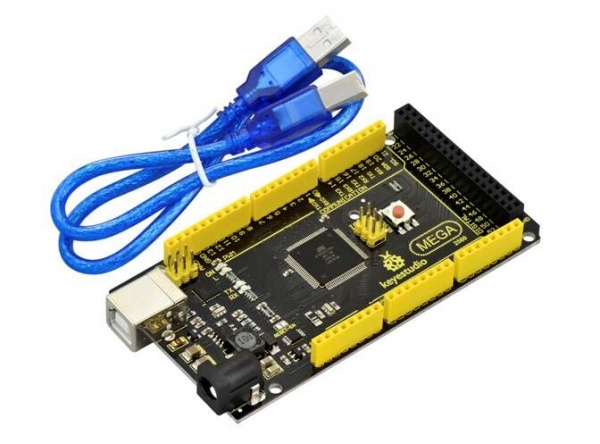Ks0342 Keyestudio MEGA 2560 Compatible Board Advanced: Difference between revisions
Keyestudio (talk | contribs) |
Keyestudio (talk | contribs) |
||
| (3 intermediate revisions by the same user not shown) | |||
| Line 40: | Line 40: | ||
<br> | <br> | ||
<span style=color:brown><big>'''keyestudio MEGA 2560 R3 board:''' </span></big> | <span style=color:brown><big>'''keyestudio MEGA 2560 R3 board:''' </span></big> | ||
<br>[[ | <br>[[File:KS0342-1A.png|750px|frameless]]<br> | ||
<br> | <br> | ||
<span style=color:brown><big>'''keyestudio MEGA 2560 compatible board Advanced:''' </span></big> | <span style=color:brown><big>'''keyestudio MEGA 2560 compatible board Advanced:''' </span></big> | ||
<br>[[ | <br>[[File:KS0342-2A.png|750px|frameless]]<br> | ||
| Line 437: | Line 437: | ||
[http://arduino.cc/en/Tutorial/HomePage the examples] for using various sensors and actuators;<br> | [http://arduino.cc/en/Tutorial/HomePage the examples] for using various sensors and actuators;<br> | ||
[http://arduino.cc/en/Reference/HomePage the reference] for the Arduino language;<br> | [http://arduino.cc/en/Reference/HomePage the reference] for the Arduino language;<br> | ||
PDF:<br> | |||
https://fs.keyestudio.com/KS0342 | |||
<br> | |||
==Troubleshooting== | ==Troubleshooting== | ||
If you have problems, please see the [http://arduino.cc/en/Guide/Troubleshooting troubleshooting suggestions]. | If you have problems, please see the [http://arduino.cc/en/Guide/Troubleshooting troubleshooting suggestions]. | ||
Latest revision as of 13:49, 30 April 2021
Introduction
Keyestudio Mega 2560 compatible Advanced is a microcontroller board based on the ATMEGA2560-16AU , fully compatible with Keyestudio Mega 2560 R3 board and ARDUINO MEGA 2560 REV3.
It has 54 digital input/output pins (of which 15 can be used as PWM outputs), 16 analog inputs, 4 UARTs (hardware serial ports), a 16 MHz crystal oscillator, a USB connection, a power jack, 2 ICSP headers, and a reset button.
It contains everything needed to support the microcontroller. With its bootloader, program can be downloaded directly with USB and you don’t need to use other external programmer.
Just simply connect it to a computer with a USB cable or power it via an external DC power jack (DC 7-12V) or via female headers Vin /GND (DC 7-12V) to get started.
Note: the most important difference between keyestudio MEGA 2560 compatible board Advanced and keyestudio MEGA 2560 R3 board is the voltage regulator chip used in the board.
The voltage regulator chip used in keyestudio MEGA 2560 R3 board is NSP1117. When connect the external power, output 5V, the drive current is 1A. However, keyestudio MEGA 2560 compatible board Advanced features the voltage-regulator chip MP2307DN. When connect the external power, output 5V, the drive current can be 2A.
The MEGA 2560 is designed for more complex projects. With 54 digital I/O pins, 16 analog inputs and a larger space for your sketch, it is the recommended board for 3D printers and robotics projects. This gives your projects plenty of room and opportunities.
| keyestudio MEGA 2560 compatible board Advanced | keyestudio MEGA 2560 R3 board | |
|---|---|---|
| voltage-regulator chip | MP2307DN | NSP1117 |
| Power Output | 5V | 5V |
| Drive Current(external power) | 2A | 1A |
| Drive Current(USB power) | 0.5A | 0.5A |
keyestudio MEGA 2560 R3 board:
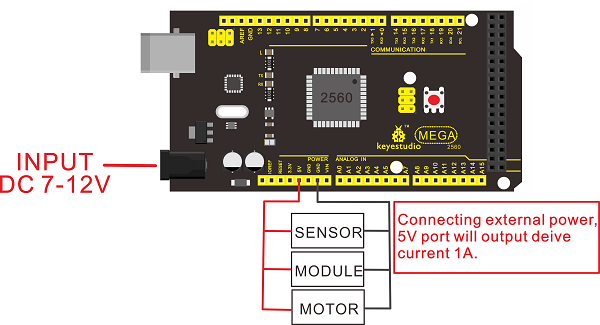
keyestudio MEGA 2560 compatible board Advanced:
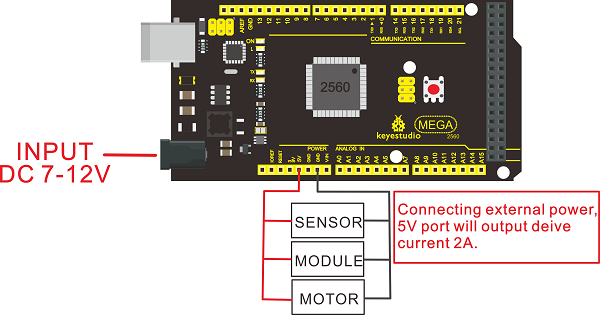
TECH SPECS
| Microcontroller | ATMEGA2560-16AU |
|---|---|
| Operating Voltage | 5V |
| Input Voltage (recommended) | DC7-12V |
| Digital I/O Pins | 54 (D0-D53) |
| PWM Digital I/O Pins | 15 (D2-D13; D44-D46) |
| Analog Input Pins | 16 (A0-A15) |
| DC Current per I/O Pin | 20 mA |
| DC Current for 3.3V Pin | 50 mA |
| Flash Memory | 256 KB of which 8 KB used by bootloader |
| SRAM | 8 KB |
| EEPROM | 4 KB |
| Clock Speed | 16 MHz |
| LED_BUILTIN | D13 |
Details
- Dimensions: 108mm x 53.5mm x 15mm
- Weight: 33.6g
Element and Pin Interfaces
Here is an explanation of what every element and interface of the board does:
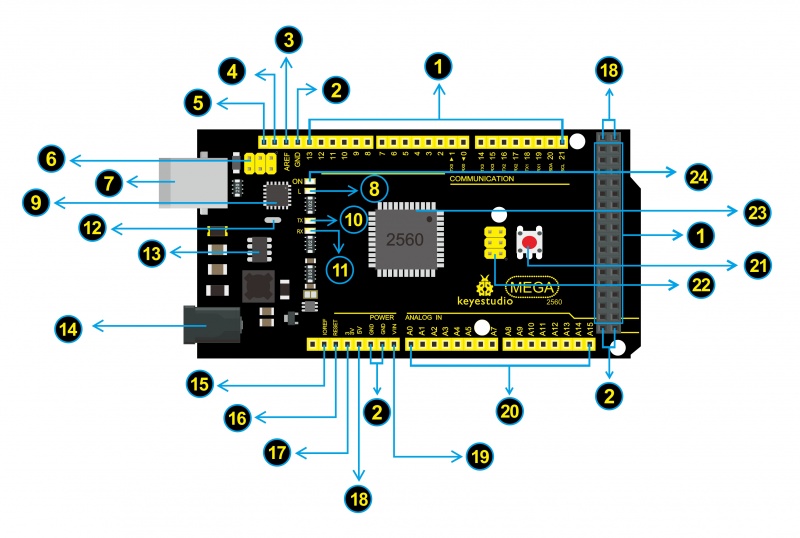

|
Digital I/O
Arduino MEGA has 54 digital input/output pins (of which 15 can be used as PWM outputs). These pins can be configured as digital input pin to read the logic value (0 or 1). Or used as digital output pin to drive different modules like LED, relay, etc. |

|
GND
Ground pins |

|
AREF
Reference voltage (0-5V) for analog inputs. Used with analogReference(). Configures the reference voltage used for analog input (i.e. the value used as the top of the input range). |

|
SDA
IIC communication pin |

|
SCL
IIC communication pin |

|
ICSP (In-Circuit Serial Programming) Header
the AVR, an Arduino micro-program header consisting of MOSI, MISO, SCK, RESET, VCC, and GND. Connected to the ATMEGA16U2-MU. When connecting to PC, program the firmware to ATMEGA16U2-MU. |

|
USB Connection
Arduino board can be powered via USB connector. |

|
D13 LED
There is a built-in LED driven by digital pin 13. When the pin is HIGH value, the LED is on, when the pin is LOW, it's off. |

|
ATMEGA 16U2-MU
USB to serial chip, can convert the USB signal into serial port signal. |

|
TX LED
Onboard you can find the label: TX (transmit) |

|
RX LED
Onboard you can find the label: RX(receive ) |

|
Crystal Oscillator
How does Arduino calculate time? by using a crystal oscillator. |

|
Voltage Regulator
Convert an external input DC7-12V voltage into DC 5V, then switch DC 5V to the processor and other components. Output DC 5V, the drive current is 2A. |

|
DC Power Jack
Arduino board can be supplied with an external power DC7-12V from the DC power jack. |

|
IOREF
This pin on the board provides the voltage reference with which the microcontroller operates. A properly configured shield can read the IOREF pin voltage and select the appropriate power source or enable voltage translators on the outputs for working with the 5V or 3.3V. |

|
RESET Header
Connect an external button to reset the board. The function is the same as reset button. |

|
Power Pin 3V3
Provides 3.3V voltage output |

|
Power Pin 5V
Provides 5V voltage output |

|
Vin
You can supply an external power input DC7-12V through this pin to Arduino board. |

|
Analog Pins
Onboard has 16 analog inputs, labeled A0 to A15. |

|
RESET Button
You can reset your Arduino board, for example, start the program from the initial status. You can use the RESET button. |

|
ICSP (In-Circuit Serial Programming) Header
the AVR, an Arduino micro-program header consisting of MOSI, MISO, SCK, RESET, VCC, and GND. |

|
Microcontroller
Each Arduino board has its own microcontroller. You can regard it as the brain of your board. |

|
Power LED Indicator
Powering the Arduino, LED on means that your circuit board is correctly powered on. If LED is off, connection is wrong. |
Specialized Functions of Some Pins
- Serial Communication: D0 (RX0) and D1 (TX1); Serial 1: D19 (RX1) and D18 (TX1); Serial 2: D17 (RX2) and D16 (TX2); Serial 3: D15 (RX3) and D14 (TX3).
Used to receive (RX) and transmit (TX) TTL serial data. Pins 0 and 1 are also connected to the corresponding pins of the ATmega16U2 USB-to-TTL Serial chip.
- PWM Pins (Pulse-Width Modulation): D2 to D13, and D44 to D46.
Provide 8-bit PWM output with the analogWrite() function.
- External Interrupts: D2 (interrupt 0), D3 (interrupt 1), D18 (interrupt 5), D19 (interrupt 4), D20 (interrupt 3), and D21 (interrupt 2).
These pins can be configured to trigger an interrupt on a low level, a rising or falling edge, or a change in level. See the attachInterrupt() function for details.
- SPI communication: D53 (SS), D52 (SCK), D51 (MOSI), D50 (MISO).
These pins support SPI communication using theSPI library. The SPI pins are also broken out on the ICSP header, which is physically compatible with the Arduino Uno.
- IIC communication: D20 (SDA); D21 (SCL). Support TWI communication using the Wire library.
Tips
- Automatic (Software) Reset:
Rather than requiring a physical press of the reset button before an upload, the Mega 2560 board is designed in a way that allows it to be reset by software running on a connected computer.
- The Mega 2560 board contains a trace that can be cut to disable the auto-reset. The pads on either side of the trace can be soldered together to re-enable it. It's labeled "RESET-EN". You may also be able to disable the auto-reset by connecting a 110 ohm resistor from 5V to the reset line; see this forum thread for details.
Detailed Use with ARDUINO Software as follows:
Step1 | Download the Arduino environment (IDE)
When you get the Mega 2560 development board, first you should install the Arduino software and driver.
We usually use the Windows software Arduino 1.5.6 version. You can download it from the link below:
https://www.arduino.cc/en/Main/OldSoftwareReleases#1.5.x
Or you can browse the ARDUINO website to download the latest version from this link, https://www.arduino.cc, pop up the following interface.
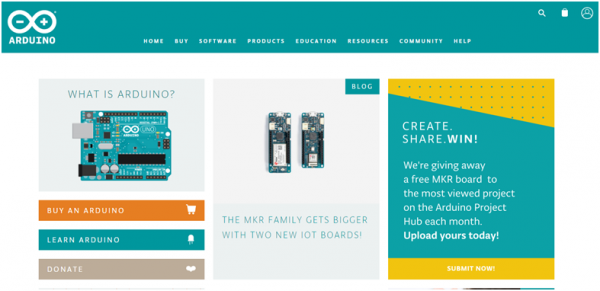
Then click the SOFTWARE on the browse bar, you will have two options ONLINE TOOLS and DOWNLOADS.
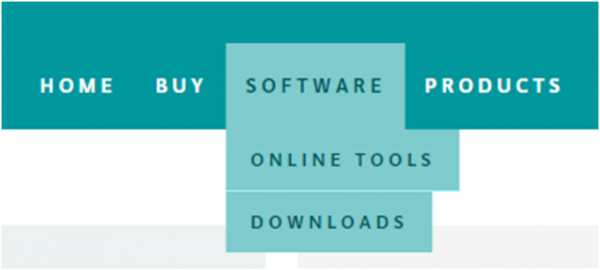
Click DOWNLOADS, it will appear the latest software version of ARDUINO 1.8.5 shown as below.
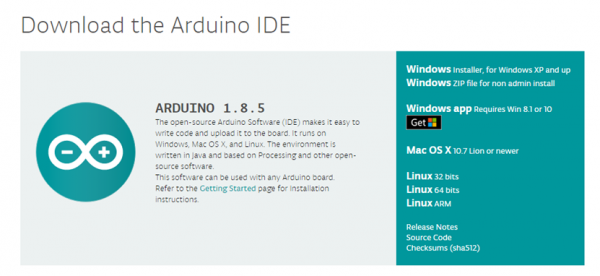
In this software page, on the right side you can see the version of development software for different operating systems. ARDUINO has a powerful compatibility. You should download the software that is compatible with the operating system of your computer.
We will take WINDOWS system as an example here. There are also two options under Windows system, one is installed version, the other is non-installed version.
For simple installed version, first click Windows Installer, you will get the following page.
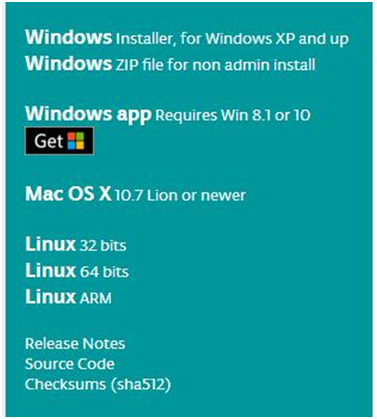
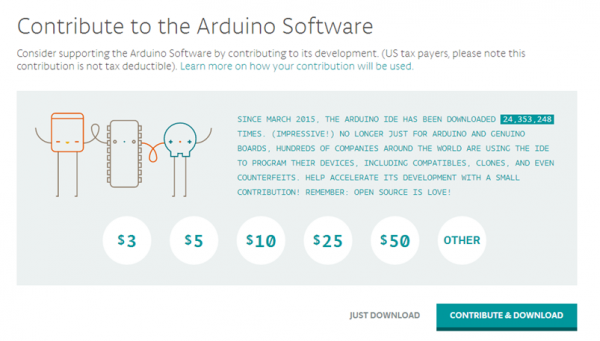
This way you just need to click JUST DOWNLOAD, then click the downloaded file to install it.
For non-installed version, first click Windows ZIP file, you will also get the pop-up interface as the above figure.
Click JUST DOWNLOAD, and when the ZIP file is downloaded well to your computer, you can directly unzip the file and click the icon of ARDUINO software to start it.
Installing Arduino (Windows)
Install Arduino with the exe. Installation package downloaded well.
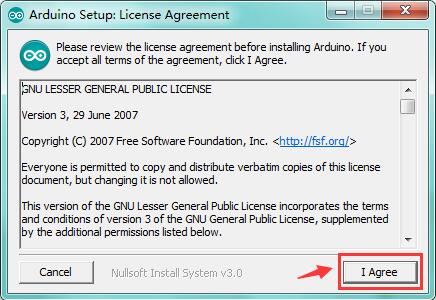
Click“I Agree”to see the following interface.
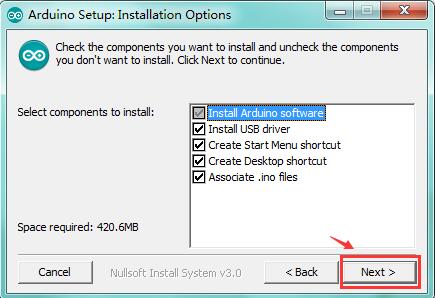
Click “Next”. Pop up the interface below.
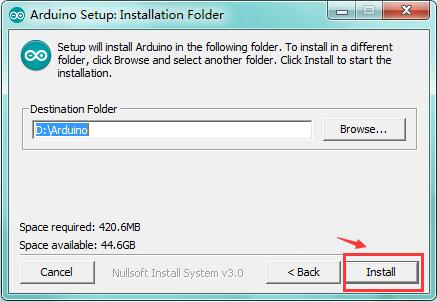
You can press Browse… to choose an installation path or directly type in the directory you want.
Then click “Install” to initiate installation.
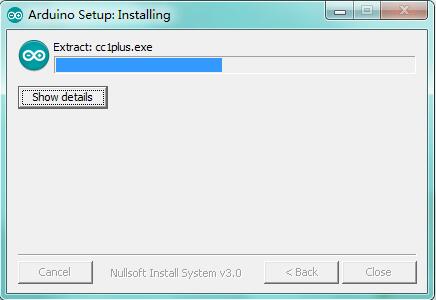
Wait for the installing process, if appear the interface of Window Security, just continue to click Install to finish the installation.
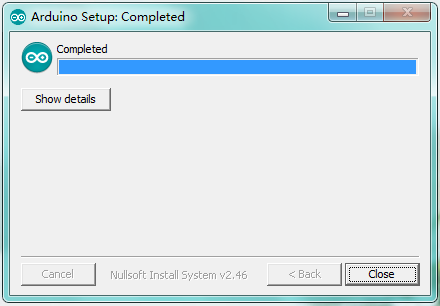
Installing Driver
Next, we will introduce the driver installation of Mega 2560 R3 development board. The driver installation may have slight differences in different computer systems. So in the following let’s move on to the driver installation in the WIN 7 system.
The Arduino folder contains both the Arduino program itself and the drivers that allow the Arduino to be connected to your computer by a USB cable. Before we launch the Arduino software, you are going to install the USB drivers.
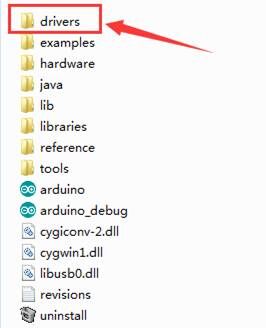
Plug one end of your USB cable into the Arduino and the other into a USB socket on your computer.
When you connect Mega 2560 board to your computer at the first time, right click the icon of your “Computer” —>for “Properties”—> click the “Device manager”, under “Other Devices”, you should see an icon for “Unknown device” with a little yellow warning triangle next to it. This is your Arduino.
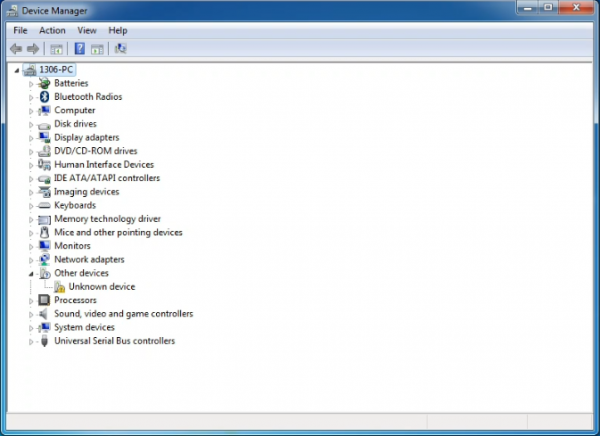
Then right-click on the device and select the top menu option (Update Driver Software...) shown as the figure below..
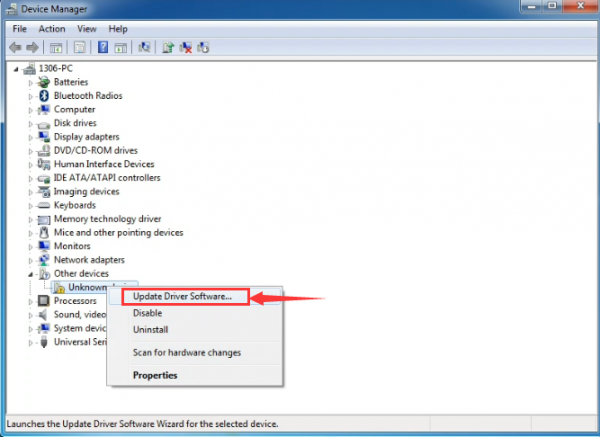
It will then be prompted to either “Search Automatically for updated driversoftware” or “Browse my computer for driver software”. Shown as below. In this page, select “Browse my computer for driver software”.
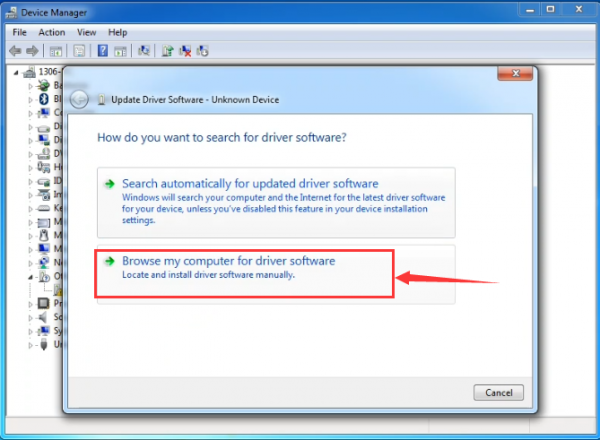
After that, select the option to browseand navigate to the “drivers” folder of Arduino installation.
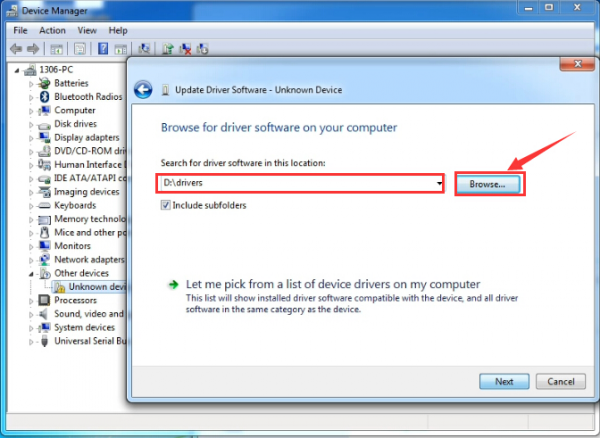
Click “Next” and you may get a security warning, if so, allow the software to be installed. Shown as below.
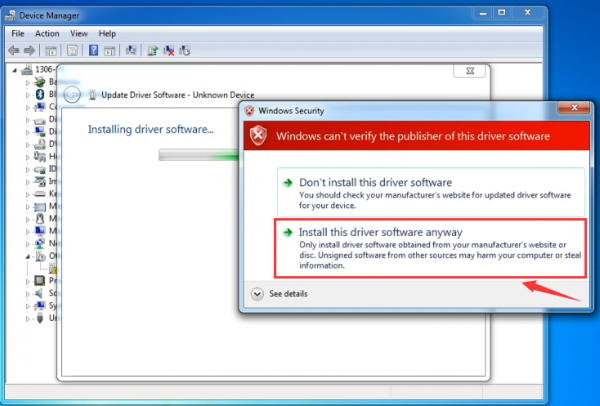
Once the software has been installed, you will get a confirmation message. Installation completed, click “Close”.
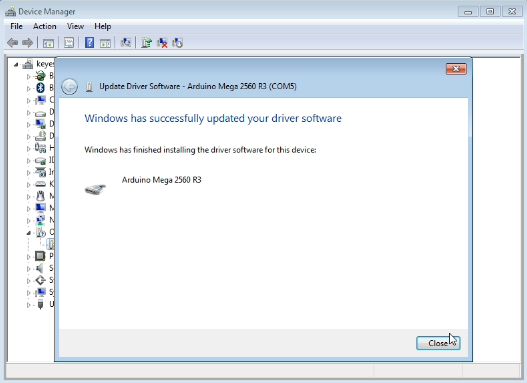
Up to now, the driver is installed well. Then you can right click “Computer” —>“Properties”—>“Device manager”, you should see the device as the figure shown below.
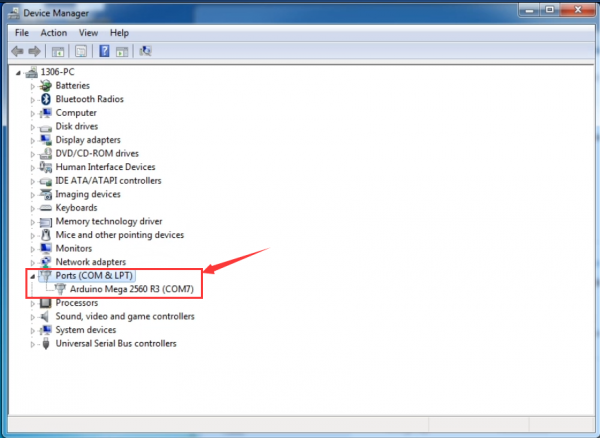
Introduction for Arduino IDE Toolbar
Double-click the icon of Arduino software downloaded well, you will get the interface shown below.

(Note: if the Arduino software loads in the wrong language, you can change it in the preferences dialog. See the environment page for details.)
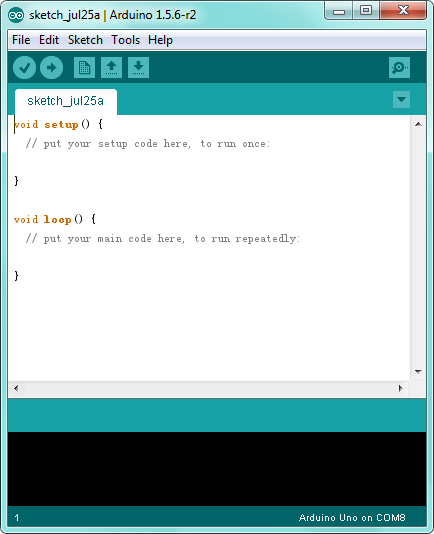
The functions of each button on the Toolbar are listed below:
![]()
Step2| Connect the board
Connect the Mega 2560 board to your computer using the USB cable. The power LED should go on.
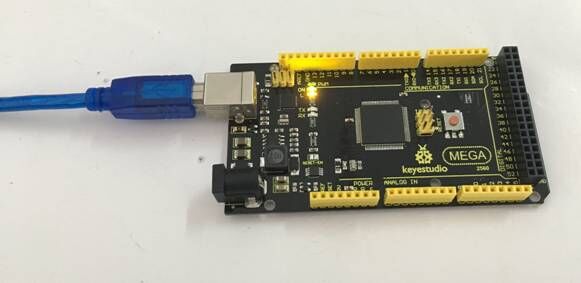
Step3| Select the Arduino Board
Open the Arduino IDE, you’ll need to click the “Tools”, then select the Board that corresponds to your Arduino.
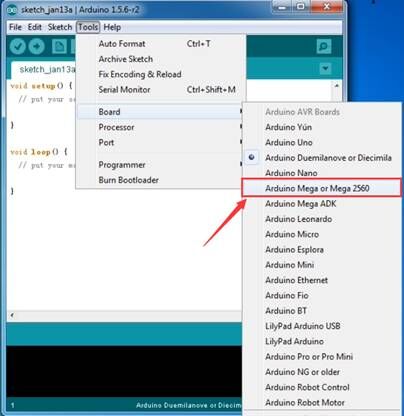
Step4| Select the Serial Port
Select the serial device of the Arduino board from the Tools | Serial Port menu. This is likely to be COM3 or higher (COM1and COM2 are usually reserved for hardware serial ports). To find out, you can disconnect your Arduino board and re-open the menu; the entry that disappears should be the Arduino board. Reconnect the board and select that serial port.
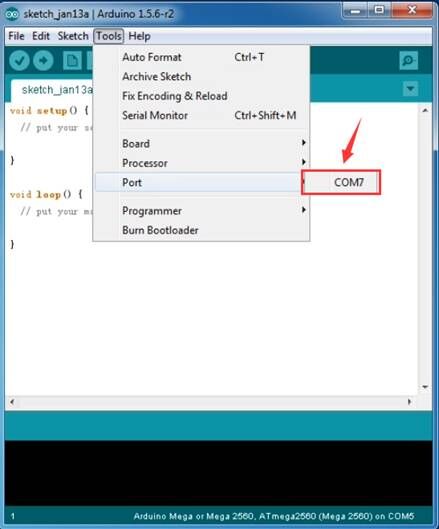
Note: to avoid errors, the COM Port should keep the same as the Ports shown on Device Manager.
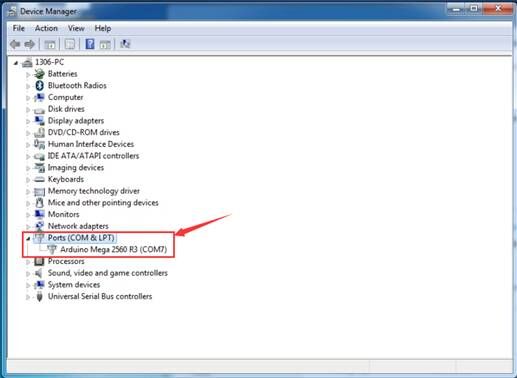
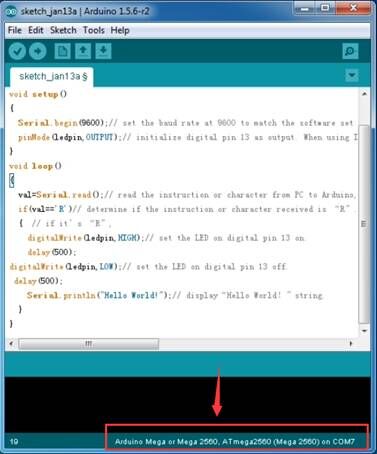
Step5| Upload the Program
Below is an example program for displaying the Hello World!
Copy and paste the code to the Arduino environment IDE.
int val;//define variable val
int ledpin=13;// define digital pin13
void setup()
{
Serial.begin(9600);// set the baud rate at 9600. When connected to a specific device, (e.g. bluetooth), the baud rate needs to be the same with the device.
pinMode(ledpin,OUTPUT);// initialize digital pin 13 as output. When using I/O ports on an Arduino, this kind of set up is always needed.
}
void loop()
{
val=Serial.read();// read the instruction or character from PC to Arduino, and assign them to Val.
if(val=='R')// determine if the instruction or character received is an “R”.
{ // if it’s “R”,
digitalWrite(ledpin,HIGH);// set the LED on digital pin 13 on.
delay(500);
digitalWrite(ledpin,LOW);// set the LED on digital pin 13 off.
delay(500);
Serial.println("Hello World!");// display“Hello World!”.
}
}
Then click verify button to check the errors. If compiling successfully, the message "Done compiling." will appear in the status bar.
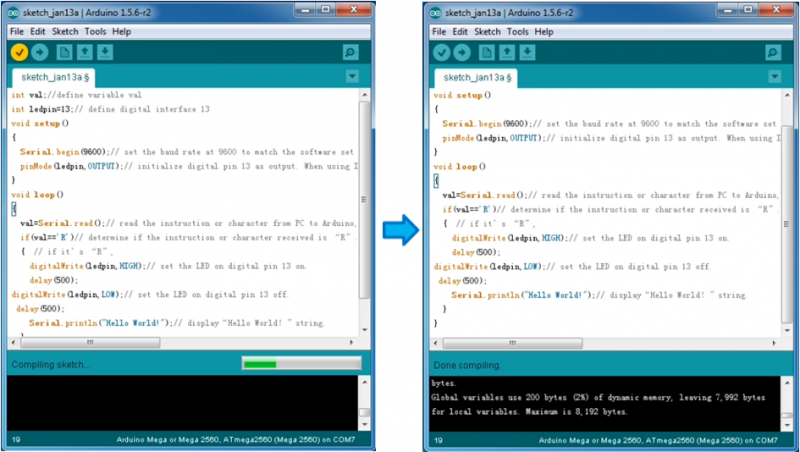
After that, click the “Upload” button to upload the code. If the upload is successful, the message "Done uploading." will appear in the status bar.
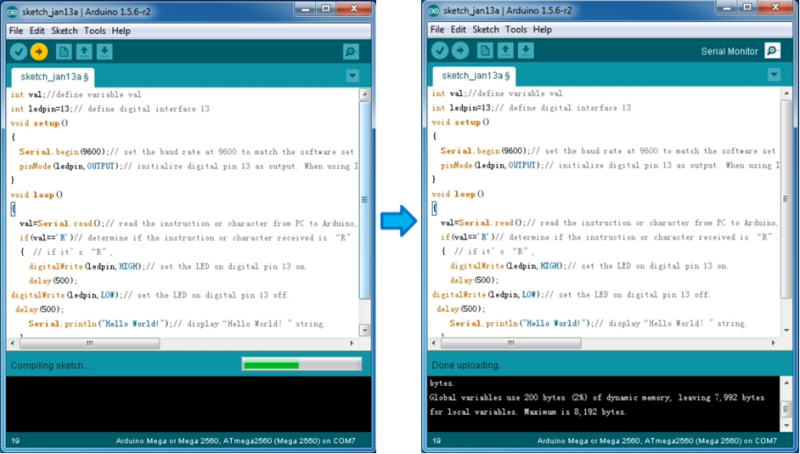
Step6| Open the Serial Monitor
After that, click the serial monitor button to open the serial monitor.
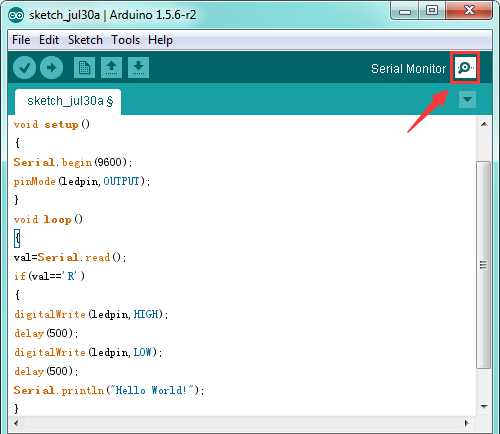
Then set the baud rate as 9600, enter an “R” and click Send, you should see the RX led on the board blink once, and then D13 led blink once, finally "Hello World!" is showed on the monitor, the TX led blink once. Congrats!
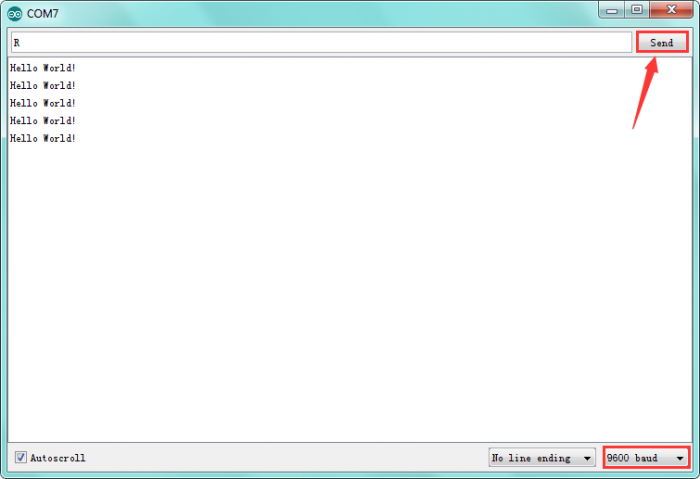
Package Included
- Keyestudio MEGA 2560 Advanced board * 1pcs
- USB cable * 1pcs
Other Links
You might also want to look at
the examples for using various sensors and actuators;
the reference for the Arduino language;
PDF:
https://fs.keyestudio.com/KS0342
Troubleshooting
If you have problems, please see the troubleshooting suggestions.
